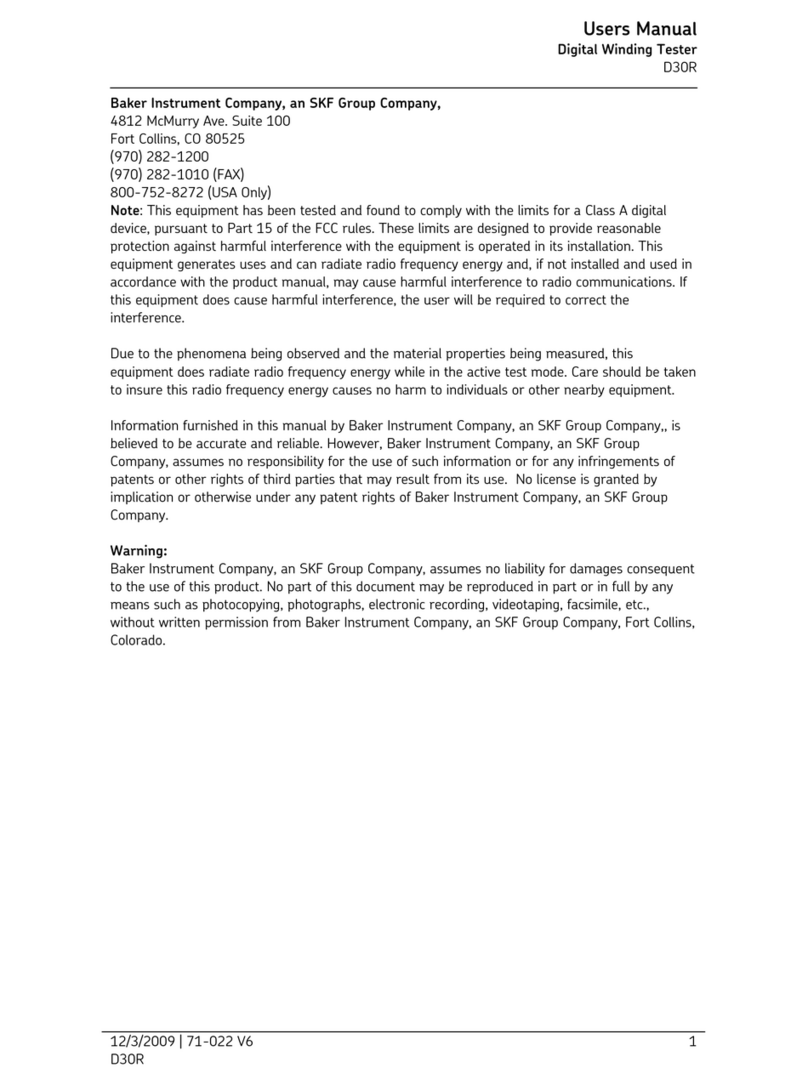
D30R Users Manual
7
Do Not Touch Test Leads while test is in Progress!
71-023 Rev C 5/8/2007
MAINTENANCE TESTING ................................................................................. 83
Application Notes.......................................................................................84
SINGLE PHASE MOTORS AND TWO TERMINAL DEVICES ................................. 85
Determination of a Fault............................................................................85
FORM COILS ................................................................................................... 86
Determination of a Fault............................................................................86
Notes and Tips for Form Coils............................................................... 86
THREE PHASE STATORS .................................................................................. 87
Determination of a Fault............................................................................88
TWO OR MORE SINGLE COILS ......................................................................... 88
Determination of a Fault............................................................................89
Notes and Precautions for Two Single Coils.......................................... 89
WOUND ROTOR MOTORS................................................................................ 90
Determination of a Fault............................................................................91
SYNCHRONOUS MOTOR/GENERATOR ............................................................. 92
Determination of a Fault............................................................................92
CHILLER MOTOR TESTING .............................................................................. 93
FIELD COILS ................................................................................................... 93
DC MOTOR/GENERATORS .............................................................................. 93
ARMATURES ................................................................................................... 94
Bar-to-Bar Surge Test................................................................................94
Span Testing...............................................................................................94
Determination of a Fault............................................................................96
Notes and Tips for Span Testing Armatures .......................................... 97
TESTING LARGE AC STATORS/MOTORS ......................................................... 98
Notes and Tips for Large AC Stator/Motors .......................................... 99
ROTOR LOADING (COUPLING)WHEN TESTING ASSEMBLED MOTORS........... 100
TESTING ASSEMBLED MOTORS FROM THE SWITCHGEAR .............................. 102
Notes and Tips for Testing from the Switchgear.................................. 102
TRANSFORMERS............................................................................................ 103
Single Phase Transformers......................................................................103
Three Phase Transformers.......................................................................104
Determination of a Fault..........................................................................105
CHAPTER 9 DOCUMENTING TESTS.....................................................107
Store.........................................................................................................109
Store Record Submenu Options................................................................110
Store Resistance Data..............................................................................110
Store HiPot and PI Data..........................................................................111
Store Surge Data......................................................................................112
STORE Lead Submenu Options................................................................112
Recall .......................................................................................................113
Recall Record Submenu Options..............................................................113




























